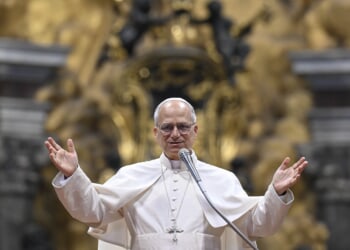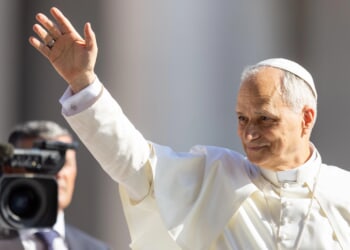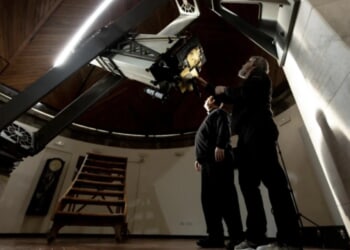ACI Prensa Staff, May 19, 2025 /
12:03 pm
From a portable throne carried on the shoulders of attendants to state-of-the-art electric cars, the pope’s means of transportation have evolved considerably over time, reflecting changes in the Church, technology, and the world.
For centuries, pontiffs used the “sedia gestatoria” (Italian for “portable chair”), a type of ceremonial throne used for solemn events adorned with feathered fans and carried by men during solemn ceremonies. The last to use a gestatory chair was John Paul I.

For longer journeys, the popes used horse-drawn carriages.
The oldest recorded carriage, according to the Vatican Museums website, is the Grand Gala Berliner, built in 1826 for Pope Leo XII. This carriage was crowned by a canopy decorated with a dove, representing the Holy Spirit.
The Vatican Museums houses at least five more carriages in its Coach Pavilion, including the Pontifical Landau, which could be opened to allow the pope to greet the faithful during his tours. It was used by Leo XIII and Pius XI.
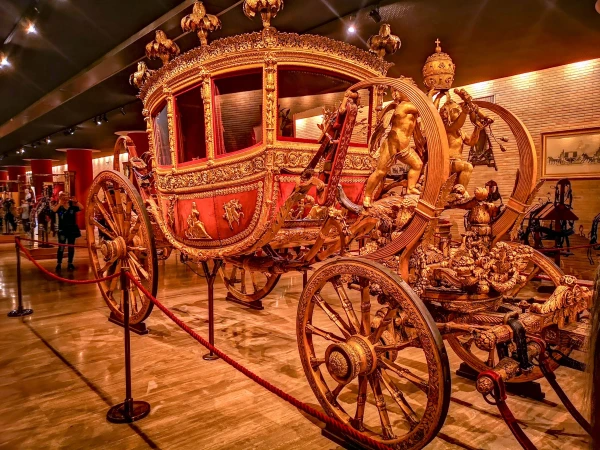
The great epochal change came in 1929 with Pius XI, the first pontiff to use an automobile. That same year, after the signing of the Lateran Pacts — which gave rise to Vatican City State — the pope received as a gift an American Graham-Paige 837, whose interior seat resembles the Holy Father’s throne.
This was considered a historic vehicle, as it was the first to leave Vatican City since the fall of Rome in 1870. Years later, Pope Pius XII used the same car to personally travel to Rome’s San Lorenzo neighborhood after the American bombing of July 19, 1943.

In the following decades, papal vehicles continued to be modernized. In 1975, on the occasion of the jubilee, Paul VI commissioned an open-top car to greet the faithful in St. Peter’s Square.
This style was also adopted by John Paul II, during whose pontificate the term “popemobile” became popular. One of the most iconic was the Fiat Campagnola, in which the pope was shot during the 1981 assassination attempt. From then on, designs were outfitted with bulletproof glass and reinforced security.

The same style of automobiles continued with Pope Francis, except that he rejected armored cars for most of his trips involving large crowds of the faithful.
Toward the end of his pontificate, the use of electric cars was promoted, both for his personal transportation and for the Vatican’s vehicle fleet.
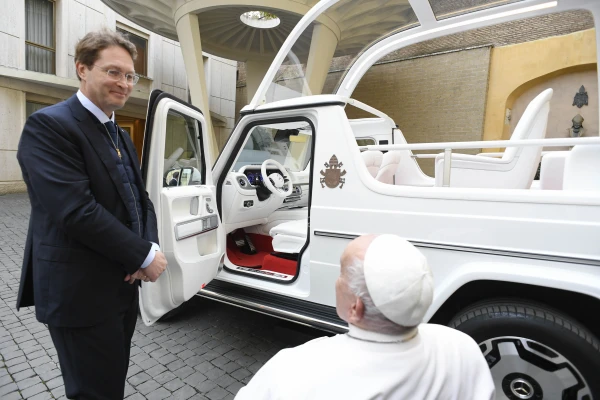
(Story continues below)
Subscribe to our daily newsletter
Donated vehicles
Over time, the Vatican has also received vehicles as gifts, such as the Ferrari Enzo donated to the pope himself, who decided to auction it off and allocate the funds to the victims of the tsunami in Southeast Asia.
Similarly, in November 2017, Pope Francis received a white Lamborghini Huracán, which was auctioned six months later for $950,000. Part of this money was used to help with reconstruction in the Nineveh Plains of Iraq.
Pope Francis also requested that one of his vehicles be transformed by Caritas Jerusalem into a mobile medical unit to provide health care to children in the Gaza Strip.
This story was first published by ACI Prensa, CNA’s Spanish-language news partner. It has been translated and adapted by CNA.



